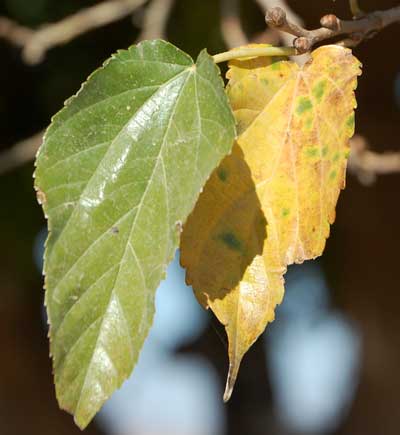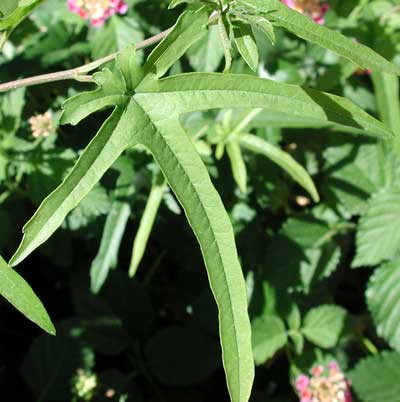White Mulberry (incl. Chinese Mulberry)
Morus alba
Sponsored Links:

Observed in the Sta. Cruz Flats, Pinal Co., Arizona, USA. Nov. 2009.
Sponsored Links:
LEAVES: Deciduous, toothed leaves with shallow or no lobes. Plants growing in full sun may have very different looking leaves with five or so palmate lobes. Leaves larger than those of Texas Mulberry and less hairy.

RANGE: In the Sonoran Desert of Arizona this tree is mostly only found
in urban and agricultural settings. Birds, especially
Northern Mockingbirds, are fond of the berries and thereby transport
the seeds in their feces. In natural areas of the Sonoran Desert, only riparian
habitats have enough water to support survival of these trees. So far Chinese
Mulberry has not become invasive in these situations.
TREE: A small to medium sized,
monoecious tree mostly planted in yards and along fence rows. Volunteer
chinese mulberries often show up below other fruit-bearing plants, having been
distributed there by birds.
FLOWERS: Small, green, inconspicuous but numerous flowers around late
March or early April. The male and female flowers appear on separate plants in
short, catkin-like spikes. Female trees have not been widely planted because
the numerous, gooey, purple berries can cover walkways. Males on the other hand
release tremendous amounts of pollen into the air, aggrevating peoples
allergies maing the plants subject to municipal bans in some areas.
FRUIT: As the conglomerate berry ripens it turns dark blue-black. Each
small spherical element of the berry is an ovary with its own seed.
UNARMED